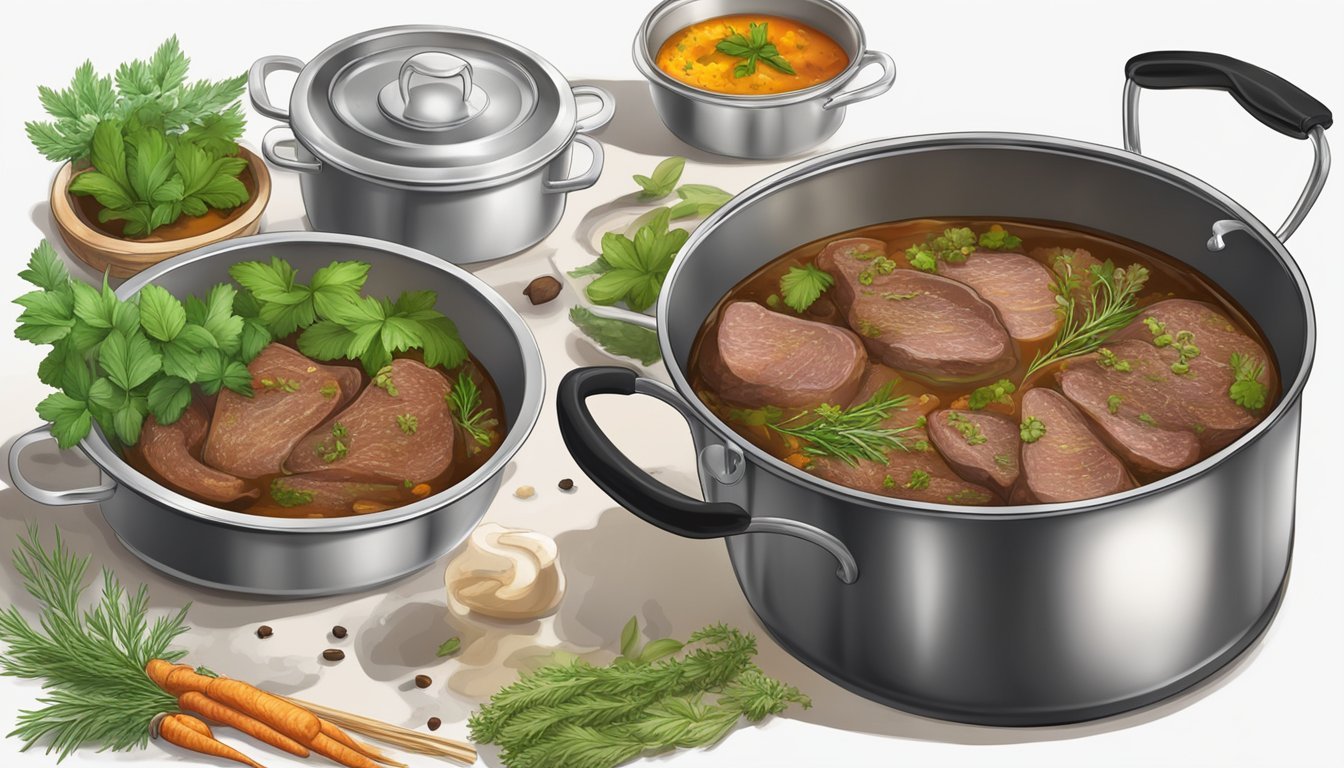Lengua
Exploring the Rich Tradition of Beef Tongue in Latin American Dishes
Lengua, the Spanish term for beef (What wine goes well with beef?) tongue, is a staple in Latin American cuisine known for its rich flavor and tender texture. While it might be an unusual cut by some standards, in many Latin American countries, this meat is cherished for its culinary versatility. The process of cooking lengua typically involves slow braising or stewing, which transforms the initially tough muscle into a succulent and flavorful dish. Its taste is often described as mild and beef-like, and when prepared properly, lengua can be as tender as finely braised beef.
This dish's origins and its preparation methods can be traced through the diverse food cultures across Latin America, where each region imparts its own unique twist to the recipe. In the culinary landscape, beef tongue is prepared with a range of seasonings, from simple salt and pepper to a melange of aromatic herbs and spices, and is often accompanied by robust sauces such as the savory Salsa Roja. The popularity of lengua spans across various meals, from tacos and tortas to hearty stews, showcasing its adaptability and the high regard in which it is held by Latin American chefs and food enthusiasts alike.
Historical Context
Beef tongue, known as "lengua," enjoys a distinguished position in Latin American cuisine. Its use in dishes across the region is steeped in a rich history that underlines its cultural significance.
Cultural Significance
Lengua is recognized not only for its flavor but also for its role in cultural traditions and special occasions throughout Latin America. This cut of meat is more than just a food item; it represents a delicacy, appreciated for its tenderness and taste after being meticulously cooked. In many communities, making and serving lengua is a practiced art, often reserved for celebrations and family gatherings, indicating its importance in social and familial bonds.
In the past, cattle butchery in these cultures aimed at utilizing every part of the animal, making lengua a staple that exemplifies resourcefulness and respect for the food source. Today, it continues to be a cherished component of gastronomy, with recipes being passed down through generations, maintaining its revered status on the dining table.
Basic Ingredients
When cooking beef tongue, or Lengua, a selection of specific ingredients enhances the rich, savory notes of the meat. These ingredients fall into various categories, each playing a critical role in developing the dish's complex flavors.
Seasonings and Spices
Garlic: A staple in Lengua recipes for its robust aroma.
Salt: Essential for seasoning and bringing out the meat's natural flavors.
Black Pepper: Adds a subtle heat.
Cumin: Contributes a warm depth.
Oregano: Often used in Mexican dishes for its earthy touch.
Bay Leaves: Impart a woodsy, herbal undertone.
Complementary Vegetables
Onion: Used both in the cooking process and as a garnish.
Carrots: Sometimes added for sweetness and texture.
Bell Peppers: Offer a sweet or piquant note, depending on the variety.
Tomato: Commonly included in salsas or sauces to accompany the Lengua.
Cilantro: Fresh cilantro provides a vibrant, citrusy finish.
Essential Cooking Elements
Water: The primary liquid for boiling the beef tongue.
Broth: Can be used as an alternative to water for added flavor.
Vegetable Oil: For sautéing or frying.
Vinegar: Adds acidity to marinades or sauces.
Side Dishes and Accompaniments
Rice: Often served as a side, flavored with garlic and cilantro.
Beans: Black or pinto beans are traditional accompaniments.
Tortillas: Soft corn or flour tortillas wrap the meat for tacos.
Salsa: Fresh or cooked salsa provides a spicy, tangy complement.
Lengua Variations
Different regions incorporate local ingredients, resulting in variations such as Lengua en Salsa (tongue in sauce) or Lengua Ranchera (ranch-style tongue).
Beef Tongue Preparation Basics
Skin: The outer layer of the tongue must be removed after boiling.
To tenderize: The tongue is usually simmered for several hours until soft.
Cooking Techniques
Slow Cooker: Ideal for tender meat without constant supervision.
Pressure Cooker: Reduces the cooking time significantly.
Braising: In a Dutch oven or similar cookware, allowing flavors to concentrate.
Instant Pot: A modern method for efficient and effective cooking.
Nutritional Information
Beef tongue is high in calories and protein, also a good source of iron. Cooking it using methods like slow cooking can help retain these nutrients.
Recipe Corner
Discover traditional and creative ways to enjoy Lengua with family and friends.
Advanced Topics
Explore complex cooking techniques and the cultural significance of beef tongue across various cuisines.
Frequently Asked Questions
Total Time: 3-4 hours, combining prep time, cook time, and additional preparations.
Heart Health: Discuss the benefits and concerns of including offal like beef tongue in a balanced diet.




